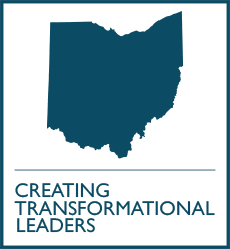Apr 13

Don’t Forget Fido
CREATING A BETTER GERIATRIC PATIENT PLAN
For every tidy patient plan, there’s a person with a messy real life. That’s just how it goes, right?
And who better to push back on the patient plan than the caregiver (spouse, child, paid assistant) who is responsible for making sure that it happens?
On a recent Saturday, Northeast Ohio Medical University was a hive of activity for 190 students from various fields—medicine, pharmacy, advance practice nursing, physical therapy, exercise science, nutrition, EMS and social work—from colleges, universities and health care systems in the region. The goals for the students: Learn from faculty about their disciplines and how to work together as a team; draw on each team member’s expertise in their respective health field to create a patient plan; and finally, hear from a Standardized Patient (SP)—an actor, in this case, playing the role of the patient’s caregiver, who would let them know what life obstacles might run the team’s carefully conceived plan off the rails.
“Collaboration is the point of all interprofessional training programs, and at larger universities, often it’s all done in-house. NEOMED has a unique collaboration, because we invite faculty and students from other institutions for events like this training, which was focused on geriatric patient care,’’ said Cassandra Konen, associate director of NEOMED’s Wasson Center for Clinical Skills, Training, Assessment, and Scholarship and Interprofessional Education Services (IPES).
Half of the students, from Ursuline College, Youngstown State and Walsh universities, NEOMED and Summa Health Emergency Medicine, took part in a 3.5 -hour morning session; the other half participated in an afternoon session. During the event, students and faculty facilitators learned skills and practiced tools to improve teamwork and collaborative patient care. Many of the tools were adapted from TeamSTEPPS, a teamwork system created by federal agencies to develop collaboration and communication skills.
“The level of inter-institutional collaboration and communication to plan and implement this interprofessional collaborative education workshop was commendably modeled by the faculty and staff planning committee and contributed to the students’ success in the event,” said Holly Gerzina, Ph.D., executive director of the Wasson Center and IPES. She noted that Mount Union physical therapy students and Mercy College of Ohio Nursing students will be involved, too, at future NEOMED IPE team-training activities.
Treating Mr. Bennett
To get things started, faculty facilitators from the health professions named above involved students in their poster presentations. For example, licensed nutritionist Dema Esper, a faculty member at YSU, explained that her role sometimes includes doing a brief physical exam (as shown in this photo) to determine the optimal nutritional recommendations. The process continued with the students—represented by four or five professions at each round table—reading a fictional case study of a patient, an elderly man named Mr. Bennett.
Getting up from their tables, the students split off into individual discipline huddles—nutritionists in one huddle, physical therapists in another, and so on—to determine what guidance they could offer the patient.
Returning to the tables, it was time to pool resources and expertise into a care plan. Emily Adkinson, a nursing student at Ursuline College School of Nursing, said it was her first time sitting down with an entire team to put together such a document. “Working alongside other students was beneficial because we were able to bridge the gaps between each person’s passions,’’ she said.
Remembering Fido
Things got even more interesting when the SPs spoke up to remind them of the caregiver’s perspective, said Eric Westerbeck, a third-year student in the College of Medicine. One part of the picture everyone in their group had missed was a crucial social component: the patient’s dog.
“Being confined in a hospital setting for so long, we often lose sight of what goes on when patients leave the hospital. Perhaps to a fault, we are so wrapped up in covering the medical and physical needs of patients that we struggle to remember the life they knew before coming to the hospital. Having the caregiver bring important points to our attention, such as the family dog, allowed us to create a more encompassing and satisfying plan,” said Westerbeck.
Elizabeth Vrataric, a student from Youngstown State University Coordinated Program in Dietetics, said, “By learning how to communicate, work together, and most importantly listen to what information the other students provided, it taught me that none of us know everything. That’s why being part of a team is critical.”
Eric Westerbeck (M3) contributed to this report.

